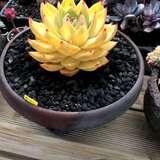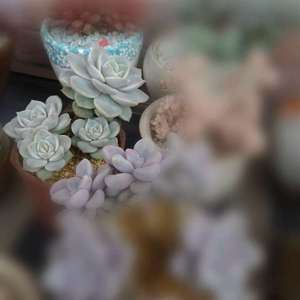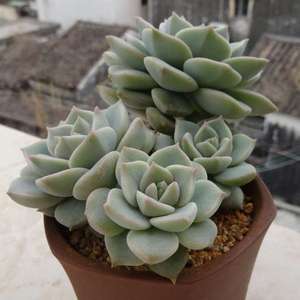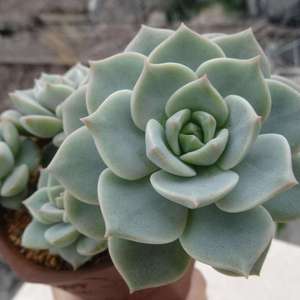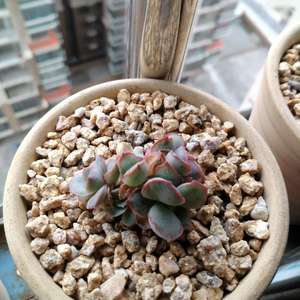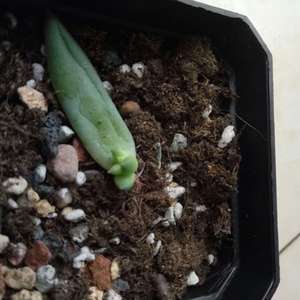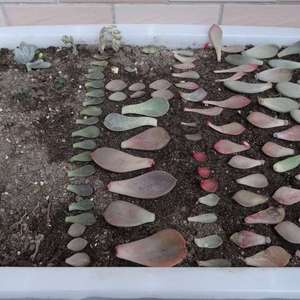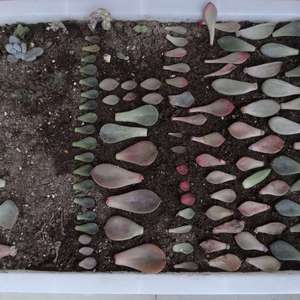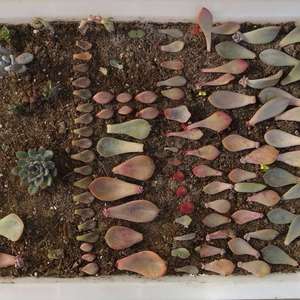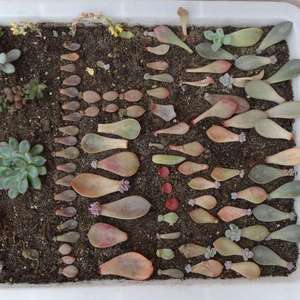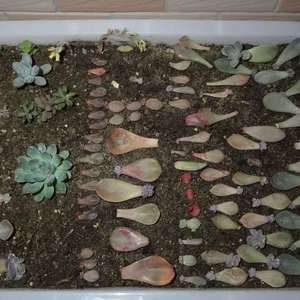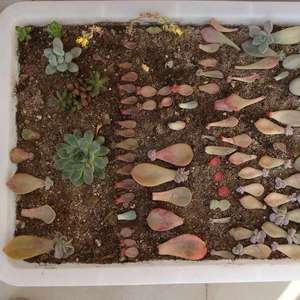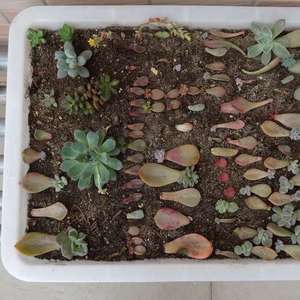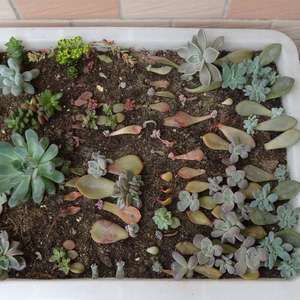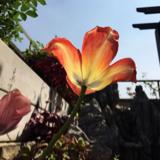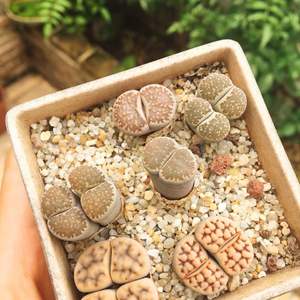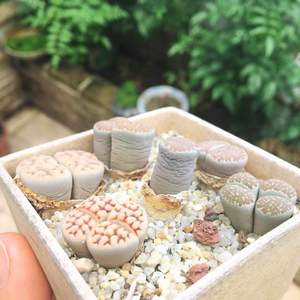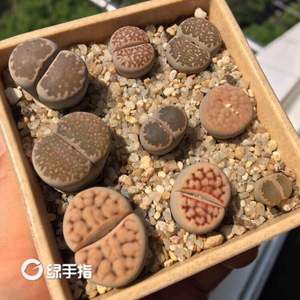文章
Miss Chen
2018年06月07日

Description: This herbaceous perennial plant produces a stem about ½–1' long that often sprawls across the ground or leans against adjacent vegetation. This stem is light green and glabrous. The alternate leaves are up to 2½" long and 2" across; they are orbicular-cordate to cordate, medium green, mostly hairless, and crenate along their margins. While some young leaves are initially pubescent, they later become mostly hairless. The petioles of these leaves are light green and hairless; they are about as long as the leaves. At the base of each petiole, there is a pair of large stipules up to 1" long. These stipules are light green, lanceolate to ovate in shape, and hairless; they have conspicuous narrow teeth along their margins. Individual flowers develop from the axils of the leaves on slender pedicels. These pedicels are up to 4" long; they are erect to ascending, light green, and hairless. The apices of these pedicels are abruptly curved downward so that the flowers are more or less horizontal.
Each flower is about ¾" across, consisting of 5 white rounded petals, 5 light green sepals, a pistil, and inserted stamens. The two lower lateral petals have patches of fine white hairs (or beards) near the throat of the flower, while the lowermost petal has purple veins that function as nectar guides. The nectar spur of the flower is rather short and blunt. The throat of the flower is white, rather than yellow. The sepals are linear-lanceolate in shape and hairless; they are shorter than the petals. The blooming period occurs from mid-spring to early summer, lasting about 1½ months for a colony of plants. There is no noticeable floral scent. If these flowers are cross-pollinated, they will produce ovoid seedpods that are about ¼" in length and glabrous. Later in the year, inconspicuous cleistogamous flowers are produced; they are self-fertile and lack showy petals. At maturity, each seedpod splits open into 3 parts to eject its seeds. These seeds are about 2 mm. across, globoid in shape, and brown. The root system produces rhizomes and fibrous secondary roots. This plant can form clonal offsets through its rhizomes. It sometimes forms colonies.

Cultivation: The preference is light shade to partial sun, moist to mesic conditions, and a rich loamy soil. This species doesn't invade lawns because its stems are too long. It is relatively easy to cultivate in gardens.
Range & Habitat: The native Striped White Violet is fairly common in the southern half of Illinois, but in the northern half of the state it is uncommon or absent (see Distribution Map). Habitats include moist to mesic deciduous woodlands, banks of rivers and streams in shaded areas, open woodlands, woodland borders, moist meadows, shrubby hedges, and ditches. This violet is found in both high quality natural areas and more degraded sites that have a history of minor to moderate disturbance.

Faunal Associations: The nectar and pollen of the flowers attract bees, including bumblebees, long-horned bees (Synhalonia spp.), mason bees (Osmia spp.), and Andrenid bees (Andrena spp.). One of these species, Andrena violae (Violet Andrenid Bee), is a specialist pollinator (oligolege) of violets (Viola spp.). Sometimes the Giant Bee Fly (Bombylius major), butterflies, and skippers visit the flowers for nectar, but they are less effective at pollination. Other insects use the leaves and other parts of violets as sources of food. These insects include the larvae of gall flies, the larvae of sawflies, the caterpillars of various moths, the caterpillars of Fritillary butterflies, aphids, and others; see the Insect Table for a list of these species. The seeds of violets are distributed to some extent by ants because of their oily coatings. Some upland gamebirds and small rodents eat the seeds to a limited extent, including the Mourning Dove, Ruffed Grouse, Bobwhite Quail, Wild Turkey, and White-footed Mouse. In addition, the foliage of violets is eaten to a limited extent by the Cottontail Rabbit, while their rhizomes are eaten by the Eastern Chipmunk.
Photographic Location: A wooded area of Meadowbrook Park in Urbana, Illinois; a flower garden in Urbana, Illinois; a deciduous woodlands at Goll's Woods Nature Preserve in NW Ohio; a deciduous woodlands at the Portland Arch in west-central, Indiana.

Comments: Striped White Violet (Viola striata) is a rather tall and attractive species that blooms later than most violets (Viola spp.). It also has a longer than average period of bloom than most violets because its flowers are produced as the stems become longer. There are several species of violets in Illinois that produce white flowers. The Striped White Violet belongs to a group of violets in which the leaves and flowers are produced from stems – the other violets belong to a group in which their flowers and leaves are produced directly from their root systems. The Striped White Violet has unusually large stipules (up to 1" long) at the bases of its petioles; the margins of these stipules have abundant fringe-like teeth. These two characteristics separate this species from other white-flowered violets in Illinois. A similar species, the Canada Violet (Viola canadensis), produces white flowers from stems, but its stipules are quite small and they lack conspicuous teeth along their margins. A form of the Common Blue Violet (Viola pratincola alba) also produces white flowers, but this is a stemless violet. Other common names for Viola striata are Cream Violet and Pale Violet.
Each flower is about ¾" across, consisting of 5 white rounded petals, 5 light green sepals, a pistil, and inserted stamens. The two lower lateral petals have patches of fine white hairs (or beards) near the throat of the flower, while the lowermost petal has purple veins that function as nectar guides. The nectar spur of the flower is rather short and blunt. The throat of the flower is white, rather than yellow. The sepals are linear-lanceolate in shape and hairless; they are shorter than the petals. The blooming period occurs from mid-spring to early summer, lasting about 1½ months for a colony of plants. There is no noticeable floral scent. If these flowers are cross-pollinated, they will produce ovoid seedpods that are about ¼" in length and glabrous. Later in the year, inconspicuous cleistogamous flowers are produced; they are self-fertile and lack showy petals. At maturity, each seedpod splits open into 3 parts to eject its seeds. These seeds are about 2 mm. across, globoid in shape, and brown. The root system produces rhizomes and fibrous secondary roots. This plant can form clonal offsets through its rhizomes. It sometimes forms colonies.

Cultivation: The preference is light shade to partial sun, moist to mesic conditions, and a rich loamy soil. This species doesn't invade lawns because its stems are too long. It is relatively easy to cultivate in gardens.
Range & Habitat: The native Striped White Violet is fairly common in the southern half of Illinois, but in the northern half of the state it is uncommon or absent (see Distribution Map). Habitats include moist to mesic deciduous woodlands, banks of rivers and streams in shaded areas, open woodlands, woodland borders, moist meadows, shrubby hedges, and ditches. This violet is found in both high quality natural areas and more degraded sites that have a history of minor to moderate disturbance.

Faunal Associations: The nectar and pollen of the flowers attract bees, including bumblebees, long-horned bees (Synhalonia spp.), mason bees (Osmia spp.), and Andrenid bees (Andrena spp.). One of these species, Andrena violae (Violet Andrenid Bee), is a specialist pollinator (oligolege) of violets (Viola spp.). Sometimes the Giant Bee Fly (Bombylius major), butterflies, and skippers visit the flowers for nectar, but they are less effective at pollination. Other insects use the leaves and other parts of violets as sources of food. These insects include the larvae of gall flies, the larvae of sawflies, the caterpillars of various moths, the caterpillars of Fritillary butterflies, aphids, and others; see the Insect Table for a list of these species. The seeds of violets are distributed to some extent by ants because of their oily coatings. Some upland gamebirds and small rodents eat the seeds to a limited extent, including the Mourning Dove, Ruffed Grouse, Bobwhite Quail, Wild Turkey, and White-footed Mouse. In addition, the foliage of violets is eaten to a limited extent by the Cottontail Rabbit, while their rhizomes are eaten by the Eastern Chipmunk.
Photographic Location: A wooded area of Meadowbrook Park in Urbana, Illinois; a flower garden in Urbana, Illinois; a deciduous woodlands at Goll's Woods Nature Preserve in NW Ohio; a deciduous woodlands at the Portland Arch in west-central, Indiana.

Comments: Striped White Violet (Viola striata) is a rather tall and attractive species that blooms later than most violets (Viola spp.). It also has a longer than average period of bloom than most violets because its flowers are produced as the stems become longer. There are several species of violets in Illinois that produce white flowers. The Striped White Violet belongs to a group of violets in which the leaves and flowers are produced from stems – the other violets belong to a group in which their flowers and leaves are produced directly from their root systems. The Striped White Violet has unusually large stipules (up to 1" long) at the bases of its petioles; the margins of these stipules have abundant fringe-like teeth. These two characteristics separate this species from other white-flowered violets in Illinois. A similar species, the Canada Violet (Viola canadensis), produces white flowers from stems, but its stipules are quite small and they lack conspicuous teeth along their margins. A form of the Common Blue Violet (Viola pratincola alba) also produces white flowers, but this is a stemless violet. Other common names for Viola striata are Cream Violet and Pale Violet.
0
0
文章
Miss Chen
2018年06月07日

Description: This variety of Yellow Violet (Viola pubescens pubescens) forms 0-2 basal leaves from the rootstock during early to mid-spring. When they are present, the basal leaves are 1½-3" long and similarly across; they are oval-cordate or orbicular-cordate in shape and their margins are crenate-serrate. The upper surfaces of basal leaves are medium green and glabrous to sparsely short-pubescent, while their lower surfaces are light green and pubescent (especially along the major veins). The erect to ascending petioles of the basal leaves are are 2-5" long, light green, and pubescent. For this variety of Yellow Violet, only 1-2 leafy stems are produced per rootstalk. These stems are 4-10" long, light green, terete, and conspicuously pubescent; they are erect, ascending, or sprawling. Alternate leaves occur along each stem. These leaves are 2-4" long and 2-3½" across; they are ovate-cordate to oval-cordate in shape, while their margins are crenate-serrate and ciliate. The upper surfaces of alternate leaves are medium green, glabrous to sparsely short-pubescent, while their lower surfaces are light green and pubescent (especially along the major veins). The petioles of alternate leaves are ½-4" long, light green, and pubescent. At the petiole bases, there are pairs of leafy stipules about ¼-¾" long. The stipules are light green, lanceolate-oblong to lanceolate-ovate in shape, smooth (entire) or slightly toothed along their margins, and glabrous to pubescent.
Individual flowers are produced from the axils of alternate leaves. Each flower spans about ¾" across, consisting of 5 yellow petals, 5 light green sepals, 5 inserted stamens, and a pistil with an inserted style. Branched brownish purple veins occur along the lowest petal and, to a much lesser extent, the 2 lower lateral petals. At the bases of the 2 lower lateral petals, there are small tufts of hair. The lowest petal has a nectar spur that is short and blunt. The sepals are shorter than the petals, linear-lanceolate in shape, and glabrous. The slender pedicels of the flowers are 2-8" long, light green, pubescent, and ascending. The tips of the pedicels are curved, causing the flowers to nod partially. Toward the middle of each pedicel, there is a pair of tiny bractlets that are about 2 mm. long, light green, and linear-lanceolate in shape. The blooming period occurs from mid- to late spring, lasting about 1-1½ months. The flowers are often slightly fragrant. After the flowers with showy petals have finished blooming, cleistogamous flowers without petals are produced. Fertile flowers of both types are replaced by seed capsules about ½" long that are ovoid, bluntly 3-angled, and either glabrous orDistribution Map pubescent. Immature capsules are light green, but they later turn brown and split open into 3 parts, ejecting their seeds. The seeds are about 2.0-2.5 mm. long, ovoid-globoid in shape, slightly flattened, and tan-colored to brown. Each seed has a small oily appendage. The root system is rhizomatous and fibrous. The clonal plants are occasionally produced from the rhizomes.
Cultivation: The preference is partial sun to light shade, moist to dry-mesic conditions, and a relatively loose soil containing loam or sandy loam with some decaying organic matter (e.g., fallen leaves). This violet doesn't tolerate mowing. It is able to flourish in areas that have pine needles as ground litter to a greater extent than many other plants.
Range & Habitat: The native Hairy Yellow Violet (Viola pubescens pubescens) is occasional in northern Illinois, while in the rest of the state it is apparently absent. It is less common within the state than another variety of this species, Smooth Yellow Violet (Viola pubescens eriocarpa). Habitats include mesic to upland woodlands, sandy woodlands, forested sand dunes, and areas along woodland paths.
Faunal Associations: The flowers are cross-pollinated primarily by bees, including mason bees (Osmia spp.), little carpenter bees (Ceratina spp.), Anthophorid bees, Halictid bees, and Andrenid bees. Other insects that visit the flowers include bee flies (Bombylius major), small butterflies, and skippers. Bees suck nectar and collect pollen, while other floral visitors suck nectar. Some insects feed destructively on the foliage, plant juices, and other parts of violets (Viola spp.). These insect feeders include Neotoxoptera violae (Violet Aphid), Ametastegia pallipes (Violet Sawfly), Odontothrips pictipennis (a thrips), caterpillars of the moth Elaphria grata (Grateful Midget), and caterpillars of various Fritillary butterflies (Boloria spp., Speyeria spp.). Because of their oily appendages, the seeds are spread to new areas by ants. Among vertebrate animals, the seeds of violets are consumed by such birds as the Mourning Dove, Ruffed Grouse, Wild Turkey, and Slate-Colored Junco; and by such small rodents as the Pine Mouse and White-Footed Mouse (Martin et al., 1951/1961). The leaves and stems of these plants are eaten by the Cottontail Rabbit, Eastern Chipmunk, and Wood Turtle (Martin et al., 1951/1961; Wrazen & Svendsen, 1978; Ernst et al., 1994). White-Tailed Deer browse on the foliage very sparingly.

Photographic Location: A forested sand dune at the Indiana Dunes State Park in NW Indiana.
Comments: Because Hairy Yellow Violet (Viola pubescens pubescens) and Smooth Yellow Violet (Viola pubescens eriocarpa) intergrade, they are considered different varieties of the same species. Hairy Yellow Violet can be identified by the conspicuous pubescence on its stems, pedicels, and leaf undersides, while the stems, pedicels, and leaf undersides of Smooth Yellow Violet are slightly short-pubescent to nearly glabrous. Hairy Yellow Violet also differs from the latter variety by producing fewer basal leaves and leafy stems per rootstalk, and its stipules are usually larger in size and more rounded toward their tips. Plants with glabrous seed capsules have been classified as Viola pubescens peckii (Peck's Yellow Violet), but most botanists don't recognize this variety at the present time. Another common name of Viola pubescens pubescens is Downy Yellow Violet.
Individual flowers are produced from the axils of alternate leaves. Each flower spans about ¾" across, consisting of 5 yellow petals, 5 light green sepals, 5 inserted stamens, and a pistil with an inserted style. Branched brownish purple veins occur along the lowest petal and, to a much lesser extent, the 2 lower lateral petals. At the bases of the 2 lower lateral petals, there are small tufts of hair. The lowest petal has a nectar spur that is short and blunt. The sepals are shorter than the petals, linear-lanceolate in shape, and glabrous. The slender pedicels of the flowers are 2-8" long, light green, pubescent, and ascending. The tips of the pedicels are curved, causing the flowers to nod partially. Toward the middle of each pedicel, there is a pair of tiny bractlets that are about 2 mm. long, light green, and linear-lanceolate in shape. The blooming period occurs from mid- to late spring, lasting about 1-1½ months. The flowers are often slightly fragrant. After the flowers with showy petals have finished blooming, cleistogamous flowers without petals are produced. Fertile flowers of both types are replaced by seed capsules about ½" long that are ovoid, bluntly 3-angled, and either glabrous orDistribution Map pubescent. Immature capsules are light green, but they later turn brown and split open into 3 parts, ejecting their seeds. The seeds are about 2.0-2.5 mm. long, ovoid-globoid in shape, slightly flattened, and tan-colored to brown. Each seed has a small oily appendage. The root system is rhizomatous and fibrous. The clonal plants are occasionally produced from the rhizomes.
Cultivation: The preference is partial sun to light shade, moist to dry-mesic conditions, and a relatively loose soil containing loam or sandy loam with some decaying organic matter (e.g., fallen leaves). This violet doesn't tolerate mowing. It is able to flourish in areas that have pine needles as ground litter to a greater extent than many other plants.
Range & Habitat: The native Hairy Yellow Violet (Viola pubescens pubescens) is occasional in northern Illinois, while in the rest of the state it is apparently absent. It is less common within the state than another variety of this species, Smooth Yellow Violet (Viola pubescens eriocarpa). Habitats include mesic to upland woodlands, sandy woodlands, forested sand dunes, and areas along woodland paths.
Faunal Associations: The flowers are cross-pollinated primarily by bees, including mason bees (Osmia spp.), little carpenter bees (Ceratina spp.), Anthophorid bees, Halictid bees, and Andrenid bees. Other insects that visit the flowers include bee flies (Bombylius major), small butterflies, and skippers. Bees suck nectar and collect pollen, while other floral visitors suck nectar. Some insects feed destructively on the foliage, plant juices, and other parts of violets (Viola spp.). These insect feeders include Neotoxoptera violae (Violet Aphid), Ametastegia pallipes (Violet Sawfly), Odontothrips pictipennis (a thrips), caterpillars of the moth Elaphria grata (Grateful Midget), and caterpillars of various Fritillary butterflies (Boloria spp., Speyeria spp.). Because of their oily appendages, the seeds are spread to new areas by ants. Among vertebrate animals, the seeds of violets are consumed by such birds as the Mourning Dove, Ruffed Grouse, Wild Turkey, and Slate-Colored Junco; and by such small rodents as the Pine Mouse and White-Footed Mouse (Martin et al., 1951/1961). The leaves and stems of these plants are eaten by the Cottontail Rabbit, Eastern Chipmunk, and Wood Turtle (Martin et al., 1951/1961; Wrazen & Svendsen, 1978; Ernst et al., 1994). White-Tailed Deer browse on the foliage very sparingly.

Photographic Location: A forested sand dune at the Indiana Dunes State Park in NW Indiana.
Comments: Because Hairy Yellow Violet (Viola pubescens pubescens) and Smooth Yellow Violet (Viola pubescens eriocarpa) intergrade, they are considered different varieties of the same species. Hairy Yellow Violet can be identified by the conspicuous pubescence on its stems, pedicels, and leaf undersides, while the stems, pedicels, and leaf undersides of Smooth Yellow Violet are slightly short-pubescent to nearly glabrous. Hairy Yellow Violet also differs from the latter variety by producing fewer basal leaves and leafy stems per rootstalk, and its stipules are usually larger in size and more rounded toward their tips. Plants with glabrous seed capsules have been classified as Viola pubescens peckii (Peck's Yellow Violet), but most botanists don't recognize this variety at the present time. Another common name of Viola pubescens pubescens is Downy Yellow Violet.
0
0
文章
Miss Chen
2018年06月07日

Description: This herbaceous perennial plant consists of a small rosette of basal leaves (usually 3 or more), from which one or more stems up to 1' long may develop. These stems are either hairless or pubescent in longitudinal lines. The blade of each basal leaf is up to 3" long and 2½" across; at its base, there is a stout petiole up to 3" long. The petioles can be hairless or sparingly pubescent. The basal leaves are orbicular-cordate or oval-cordate, crenate-dentate along the margins, and palmately veined. This variety of Viola pubescens has less hairy leaves than the typical variety; the upper surface of each leaf is hairless, while the lower surface is either hairless or sparsely pubescent along the major veins. The cauline leaves alternate along the stems; they are similar to the basal leaves, but smaller in size. There are fairly large stipules where the petioles join the stems; these stipules are lanceolate-ovate. The flowers develop from the axils of cauline leaves; they do not occur on separate stalks from the rootstock.
Each flower is about ¾" across, consisting of 5 rounded yellow petals and 5 light green sepals. The beardless lower petal has prominent purple veins toward its base. Each of the 2 lateral petals has a beard at its base consisting of a small tuft of white hairs; sometimes there are a few purple veins outside of each beard. The 2 upper petals are beardless and they usually lack any darker veins. Each flower occurs at the apex of an individual stalk that is as long as the leaves and their petioles; this stalk nods downward at its apex, causing the flower to face outward from the stem. The floral stalk is either hairless or pubescent in lines along its length. The blooming period occurs from mid- to late spring and lasts about a month. There is no noticeable floral scent. Later, cleistogamous flowers are produced that lack petals; they can produce fertile seeds without insect pollination. Fertile flowers are replaced by ovoid seed capsules about ½-¾" in length. These seed capsules eventually turn brown and divide into 3 segments; they can eject their seeds up to a few feet from the mother plant. The small seeds are globoid and brown. The root system consists of scaly rhizomes, from which vegetative offsets can develop. This plant occasionally forms colonies.
Cultivation: The preference is light shade to partial sun, moist to mesic conditions, and a rich loamy soil with abundant organic matter. Medium shade is tolerated later in the year after the trees develop their leaves. The foliage is little bothered by disease.

Range & Habitat: This native violet is common in nearly all areas of central and northern Illinois; it is slightly less common in southern Illinois (see Distribution Map). Habitats include moist to mesic deciduous woodlands, woodland borders, and thickets. Unlike Viola pratincola (Common Blue Violet), Common Yellow Violet (Viola pubescens eriocarpa) is not often observed in yards and other disturbed areas.
Faunal Associations: The nectar and pollen of the flowers attract primarily bees, including little carpenter bees, mason bees, cuckoo bees (Nomadine), long-horned bees (Eucerine), Anthophorine bees, Halictid bees, and Andrenid bees. Less common insect visitors include Bombylius major (Giant Bee Fly), small butterflies and skippers, and Syrphid flies. Syrphid flies feed on pollen and are non-pollinating. The caterpillars of several Fritillary butterflies and moths feed on the foliage of Violet spp. (violets). See the Butterfly & Moth Table for a listing of individual species. The seeds are eaten in limited amounts by the Slate-Colored Junco and various upland gamebirds, including the Ruffed Grouse, Bobwhite, Wild Turkey, and Mourning Dove. Both the Cottontail Rabbit and White-tailed Deer have been known to feed on the foliage of violets, but this is rather uncommon.

Photographic Location: A mesic deciduous woodlands at Busey Woods in Urbana, Illinois.
Comments: The Common Yellow Violet can be difficult to distinguish from the less common typical variety, Viola pubescens pubescens (Downy Yellow Violet). The Downy Yellow Violet is restricted largely to northern Illinois. It differs from Common Yellow Violet by its hairier leaves, petioles, and flowering stalks. In addition, Downy Yellow Violet usually produces only 1-2 basal leaves per plant, rather than 3 or more. However, in many areas of Illinois, there is a tendency for these two varieties to intergrade, producing plants with intermediate characteristics. For this reason, they are no longer considered separate species by most authorities. This is the only Viola sp. (violet) in Illinois with yellow flowers, although there are additional yellow-flowered species of violet occurring in areas outside of the state.
Each flower is about ¾" across, consisting of 5 rounded yellow petals and 5 light green sepals. The beardless lower petal has prominent purple veins toward its base. Each of the 2 lateral petals has a beard at its base consisting of a small tuft of white hairs; sometimes there are a few purple veins outside of each beard. The 2 upper petals are beardless and they usually lack any darker veins. Each flower occurs at the apex of an individual stalk that is as long as the leaves and their petioles; this stalk nods downward at its apex, causing the flower to face outward from the stem. The floral stalk is either hairless or pubescent in lines along its length. The blooming period occurs from mid- to late spring and lasts about a month. There is no noticeable floral scent. Later, cleistogamous flowers are produced that lack petals; they can produce fertile seeds without insect pollination. Fertile flowers are replaced by ovoid seed capsules about ½-¾" in length. These seed capsules eventually turn brown and divide into 3 segments; they can eject their seeds up to a few feet from the mother plant. The small seeds are globoid and brown. The root system consists of scaly rhizomes, from which vegetative offsets can develop. This plant occasionally forms colonies.
Cultivation: The preference is light shade to partial sun, moist to mesic conditions, and a rich loamy soil with abundant organic matter. Medium shade is tolerated later in the year after the trees develop their leaves. The foliage is little bothered by disease.

Range & Habitat: This native violet is common in nearly all areas of central and northern Illinois; it is slightly less common in southern Illinois (see Distribution Map). Habitats include moist to mesic deciduous woodlands, woodland borders, and thickets. Unlike Viola pratincola (Common Blue Violet), Common Yellow Violet (Viola pubescens eriocarpa) is not often observed in yards and other disturbed areas.
Faunal Associations: The nectar and pollen of the flowers attract primarily bees, including little carpenter bees, mason bees, cuckoo bees (Nomadine), long-horned bees (Eucerine), Anthophorine bees, Halictid bees, and Andrenid bees. Less common insect visitors include Bombylius major (Giant Bee Fly), small butterflies and skippers, and Syrphid flies. Syrphid flies feed on pollen and are non-pollinating. The caterpillars of several Fritillary butterflies and moths feed on the foliage of Violet spp. (violets). See the Butterfly & Moth Table for a listing of individual species. The seeds are eaten in limited amounts by the Slate-Colored Junco and various upland gamebirds, including the Ruffed Grouse, Bobwhite, Wild Turkey, and Mourning Dove. Both the Cottontail Rabbit and White-tailed Deer have been known to feed on the foliage of violets, but this is rather uncommon.

Photographic Location: A mesic deciduous woodlands at Busey Woods in Urbana, Illinois.
Comments: The Common Yellow Violet can be difficult to distinguish from the less common typical variety, Viola pubescens pubescens (Downy Yellow Violet). The Downy Yellow Violet is restricted largely to northern Illinois. It differs from Common Yellow Violet by its hairier leaves, petioles, and flowering stalks. In addition, Downy Yellow Violet usually produces only 1-2 basal leaves per plant, rather than 3 or more. However, in many areas of Illinois, there is a tendency for these two varieties to intergrade, producing plants with intermediate characteristics. For this reason, they are no longer considered separate species by most authorities. This is the only Viola sp. (violet) in Illinois with yellow flowers, although there are additional yellow-flowered species of violet occurring in areas outside of the state.
0
0
文章
Miss Chen
2018年06月07日

Description: This perennial wildflower consists of a rosette of low basal leaves about 4-7" across, from which several flowering stalks develop. The blades of the basal leaves are 1½-3" long and similarly across; in outline, they are oval, orbicular, or orbicular-reniform. Early leaf blades usually lack lobes, while later blades have 3-5 major lobes and sometimes smaller secondary lobes. These palmate lobes are irregular in shape and they usually extend up to one-half of the distance, and sometimes even more, into the interior of a blade. The margins of early leaf blades are finely crenate, while the margins of later blades are smooth, crenate, or dentate. Upper surfaces of the leaf blades are medium to dark green and hairless (or nearly so), while their lower surfaces are light green and usually hairy along the major veins. The petioles of the basal leaves are relatively stout and long (about 2-4" in length), light green to pale purplish green, and either smooth or hairy.
Individual flowers develop from ascending pedicels; the flowers are usually held above or beyond the leaves. The pedicels are either smooth or hairy. Each flower is about ¾-1" across, consisting of 5 spreading blue-violet petals, 5 light green linear-lanceolate sepals, 5 inserted stamens, and a pistil with a single style. The two lateral petals have small tufts of white hairs at their bases, while the bottom petal has several violet veins on a white background that function as guides to the short nectar spur in the back of the flower. These flowers bloom during mid- to late spring for about 3 weeks. Later during the summer, inconspicuous cleistogamous flowers are produced on short pedicels; these flowers are self-fertile. The flowers are replaced by ovoid-oblong seed capsules that split open into 3 sections, ejecting their seeds. The small seeds are globoid and brown. The root system consists of a vertical crown with fibrous roots. This wildflower spreads by reseeding itself.
Cultivation: The preference is partial sun, mesic to dry conditions, and soil that is loamy or rocky. This violet is relatively intolerant of heavy leaf litter and competition from taller ground vegetation.
Range & Habitat: Three-Lobed Violet is a native wildflower that is occasional in the southern half of Illinois, becoming uncommon or absent in the northern half of the state (see Distribution Map). Habitats consist of upland woodlands, rocky open woodlands, wooded slopes, riverbanks, and thinly wooded bluffs. In these habitats, oaks are often dominant as canopy trees. Three-Lobed Violet is usually found in higher quality woodlands where the original ground flora is still intact.
Faunal Associations: The flowers are usually pollinated by bees, including Mason bees (Osmia spp.) and Andrenid bees. One bee species, Andrena violae, is a specialist pollinator of violets. Occasionally, butterflies and ants visit the flowers for nectar; the latter are ineffective at cross-pollination. The foliage and flowers of violets are eaten by several kinds of insects. These insect feeders include the caterpillars of several Fritillary butterflies (Boloria spp., Speyeria spp., & Euptoieta claudia), the caterpillars of the moths Elaphria grata (Grateful Midget) and Eubatha mendica (The Beggar), the thrips Odontothrips pictipennis, the larvae of Ametastegia pallipes (Violet Sawfly), and Neotoxoptera violate (Violet Aphid). The seeds are coated with a substance that is attractive to ants, which help to disperse the seeds into new areas. Violets are a minor source of food to some vertebrate animals. For example, the Wood Turtle (Clemmys insculpta), Eastern Chipmunk, and White-Tailed Deer sometimes eat the foliage, while the Mourning Dove and possibly other birds eat the seeds.
Photographic Location: Along a path on a wooded hill in Lakeview Park near Charleston, Illinois.
Comments: The most unusual characteristic of this violet is the highly variable shape of its leaf blades. Three-Lobed Violet has been considered a separate species in the past (known as Viola triloba), but it is now classified as the typical variety of Viola palmata. It differs from another variety, Viola palmata dilatata, by having leaf blades with either fewer lobes (3-5) or no lobes. The latter variety, referred to here as the Cleft Violet, has leaf blades with 5-9 lobes and it never produces leaves without lobes. Both varieties occupy similar habitats, although the Cleft Violet may prefer habitats that are more rocky and barren.
Individual flowers develop from ascending pedicels; the flowers are usually held above or beyond the leaves. The pedicels are either smooth or hairy. Each flower is about ¾-1" across, consisting of 5 spreading blue-violet petals, 5 light green linear-lanceolate sepals, 5 inserted stamens, and a pistil with a single style. The two lateral petals have small tufts of white hairs at their bases, while the bottom petal has several violet veins on a white background that function as guides to the short nectar spur in the back of the flower. These flowers bloom during mid- to late spring for about 3 weeks. Later during the summer, inconspicuous cleistogamous flowers are produced on short pedicels; these flowers are self-fertile. The flowers are replaced by ovoid-oblong seed capsules that split open into 3 sections, ejecting their seeds. The small seeds are globoid and brown. The root system consists of a vertical crown with fibrous roots. This wildflower spreads by reseeding itself.
Cultivation: The preference is partial sun, mesic to dry conditions, and soil that is loamy or rocky. This violet is relatively intolerant of heavy leaf litter and competition from taller ground vegetation.
Range & Habitat: Three-Lobed Violet is a native wildflower that is occasional in the southern half of Illinois, becoming uncommon or absent in the northern half of the state (see Distribution Map). Habitats consist of upland woodlands, rocky open woodlands, wooded slopes, riverbanks, and thinly wooded bluffs. In these habitats, oaks are often dominant as canopy trees. Three-Lobed Violet is usually found in higher quality woodlands where the original ground flora is still intact.
Faunal Associations: The flowers are usually pollinated by bees, including Mason bees (Osmia spp.) and Andrenid bees. One bee species, Andrena violae, is a specialist pollinator of violets. Occasionally, butterflies and ants visit the flowers for nectar; the latter are ineffective at cross-pollination. The foliage and flowers of violets are eaten by several kinds of insects. These insect feeders include the caterpillars of several Fritillary butterflies (Boloria spp., Speyeria spp., & Euptoieta claudia), the caterpillars of the moths Elaphria grata (Grateful Midget) and Eubatha mendica (The Beggar), the thrips Odontothrips pictipennis, the larvae of Ametastegia pallipes (Violet Sawfly), and Neotoxoptera violate (Violet Aphid). The seeds are coated with a substance that is attractive to ants, which help to disperse the seeds into new areas. Violets are a minor source of food to some vertebrate animals. For example, the Wood Turtle (Clemmys insculpta), Eastern Chipmunk, and White-Tailed Deer sometimes eat the foliage, while the Mourning Dove and possibly other birds eat the seeds.
Photographic Location: Along a path on a wooded hill in Lakeview Park near Charleston, Illinois.
Comments: The most unusual characteristic of this violet is the highly variable shape of its leaf blades. Three-Lobed Violet has been considered a separate species in the past (known as Viola triloba), but it is now classified as the typical variety of Viola palmata. It differs from another variety, Viola palmata dilatata, by having leaf blades with either fewer lobes (3-5) or no lobes. The latter variety, referred to here as the Cleft Violet, has leaf blades with 5-9 lobes and it never produces leaves without lobes. Both varieties occupy similar habitats, although the Cleft Violet may prefer habitats that are more rocky and barren.
0
0
文章
Miss Chen
2018年06月05日

Description: This perennial wildflower is 4-8" in length (or longer), consisting of leafy stems with axillary flowers and seed capsules. The stems are light green and glabrous. The blades of alternate leaves are about 1-2½" long and ¾-1½" across; they are oval-cordate in shape and serrate-crenate along their margins. The base of each leaf blade is indented, while its tip is well-rounded to somewhat pointed. The upper blade surface is medium to dark green and glabrous, while the lower surface to light to medium green and glabrous. The slender petioles are about the same length as the leaf blades or shorter; they are light green and glabrous. At the base of each petiole, there is a pair of stipules up to ½" long. These stipules are linear-lanceolate in shape and coarsely toothed along their margins. Individual flowers develop from the axils of the leaves on slender pedicels about 1½-3" long; the flowers are usually held above the leaves. The pedicels are light green and glabrous; there is a pair of small linear bracts toward the middle of each pedicel.
Individual flowers are ½-¾" across, consisting of 5 pale blue-violet petals, 5 green sepals, and the reproductive organs. The style of each flower is bent downward at its tip, where it is not swollen. Dark blue-violet veins radiate away from the throat of each flower across the petals; the two lateral petals have tufts of white hair (or beards) toward their bases. The lower petal has a relatively long nectar spur about ¼" long; this spur is sometimes visible when the flower is viewed from the front (behind the upper 2 petals). The nectar spur is relatively stout and either straight or slightly hooked. The sepals are linear-lanceolate, sometimes toothed toward their bases, and hairless. The blooming period occurs during the middle of spring for about 1 month. Fertilized flowers produce an ovoid-oblongoid seed capsule about 1/3" long. This capsule splits open into 3 parts to fling the seeds from the mother plant. This wildflower also produces inconspicuous cleistogamous flowers during the summer, which are self-fertile; their seed capsules are similar to the earlier fertilized flowers. The small seeds are globoid in shape and light brown at maturity. The root system consists of a vertical crown with fibrous roots and horizontal rhizomes; clonal offsets are produced occasionally from the rhizomes.

Cultivation: During the spring, the preference is dappled sunlight to light shade, moist conditions, and a rich loamy soil with abundant organic material. Later in the year, more shade is tolerated.
Range & Habitat: The native Dog Violet is found primarily in NE Illinois (see Distribution Map). This wildflower is considered rare and it is state-listed as 'threatened.' Habitats include moist rich woodlands, swampy woodlands, and moist meadows in wooded areas. Sometimes this violet is found in slightly sandy habitats that are similar to the preceding ones. Dominant canopy trees in these habitats are typically ash, maple, or elm. Dog Violet is found in higher quality habitats where the original ground flora is still intact.

Faunal Associations: In this section, information about floral-faunal relationships applies to Viola spp. (Violets) in general. The flowers of violets are cross-pollinated primarily by various bees, including honeybees, bumblebees, Mason bees (Osmia spp.), Little Carpenter bees (Ceratina spp.), digger bees (Synhalonia spp.), Halictid bees, and Andrenid bees. One bee species, Andrena violae (Violet Andrenid Bee), is a specialist pollinator of violets. Other floral visitors include bee flies (Bombylius spp.), small butterflies, skippers, and ants. Most of these insects suck nectar from the flowers, although some of the bees also collect pollen. Other insects feed on the foliage and other parts of violets. These insect feeders include the caterpillars of several Fritillary butterflies (Euptoieta claudia, Boloria spp., Speyeria spp.) and the caterpillars of several moths, including Elaphria grata (Grateful Midget), Eubaphe mendica (The Beggar), and Apantesis nais (Nais Tiger Moth). Other insect feeders include the thrips Odontothrips pictipennis, the aphid Neotoxoptera violae, and the larvae of Ametastegia pallipes (Violet Sawfly). Vertebrate animals feed on violets only to a limited extent. The White-Tailed Deer, Cottontail Rabbit, and Wood Turtle (Clemmys insculpta) sometimes browse on the foliage, while the White-Footed Mouse eats the seeds. Birds that feed on violets include the Mourning Dove (seeds), Ruffed Grouse (seed capsules, foliage), and Wild Turkey (seed capsules, rhizomes).

Photographic Location: A damp area of Goll Woods in NW Ohio, and a swampy woodland at the Indiana Dunes National Lakeshore in NW Indiana.
Comments: This interesting species belongs to a small group of violets with blue-violet flowers, nectar spurs of above average length, and flowering leafy stems (as opposed to violets with basal leaves and flowers on separate non-leafy stalks). Aside from the Dog Violet, other species in this group include Viola labradorica (Alpine Violet), Viola adunca (Hook-Spurred Violet), and Viola walteri (Walter's Violet). While the Dog Violet has pale blue-violet flowers, these other violets often have medium to dark blue-violet flowers (among other minor differences). The Alpine Violet and Hook-Spurred Violet have a more northern boreal distribution, while Walter's Violet is more southern and Appalachian. None of these three species have been found in Illinois. Some authorities have proposed reducing the status of the Dog Violet to a variety of either the Alpine Violet or the Hook-Spurred Violet.
Individual flowers are ½-¾" across, consisting of 5 pale blue-violet petals, 5 green sepals, and the reproductive organs. The style of each flower is bent downward at its tip, where it is not swollen. Dark blue-violet veins radiate away from the throat of each flower across the petals; the two lateral petals have tufts of white hair (or beards) toward their bases. The lower petal has a relatively long nectar spur about ¼" long; this spur is sometimes visible when the flower is viewed from the front (behind the upper 2 petals). The nectar spur is relatively stout and either straight or slightly hooked. The sepals are linear-lanceolate, sometimes toothed toward their bases, and hairless. The blooming period occurs during the middle of spring for about 1 month. Fertilized flowers produce an ovoid-oblongoid seed capsule about 1/3" long. This capsule splits open into 3 parts to fling the seeds from the mother plant. This wildflower also produces inconspicuous cleistogamous flowers during the summer, which are self-fertile; their seed capsules are similar to the earlier fertilized flowers. The small seeds are globoid in shape and light brown at maturity. The root system consists of a vertical crown with fibrous roots and horizontal rhizomes; clonal offsets are produced occasionally from the rhizomes.

Cultivation: During the spring, the preference is dappled sunlight to light shade, moist conditions, and a rich loamy soil with abundant organic material. Later in the year, more shade is tolerated.
Range & Habitat: The native Dog Violet is found primarily in NE Illinois (see Distribution Map). This wildflower is considered rare and it is state-listed as 'threatened.' Habitats include moist rich woodlands, swampy woodlands, and moist meadows in wooded areas. Sometimes this violet is found in slightly sandy habitats that are similar to the preceding ones. Dominant canopy trees in these habitats are typically ash, maple, or elm. Dog Violet is found in higher quality habitats where the original ground flora is still intact.

Faunal Associations: In this section, information about floral-faunal relationships applies to Viola spp. (Violets) in general. The flowers of violets are cross-pollinated primarily by various bees, including honeybees, bumblebees, Mason bees (Osmia spp.), Little Carpenter bees (Ceratina spp.), digger bees (Synhalonia spp.), Halictid bees, and Andrenid bees. One bee species, Andrena violae (Violet Andrenid Bee), is a specialist pollinator of violets. Other floral visitors include bee flies (Bombylius spp.), small butterflies, skippers, and ants. Most of these insects suck nectar from the flowers, although some of the bees also collect pollen. Other insects feed on the foliage and other parts of violets. These insect feeders include the caterpillars of several Fritillary butterflies (Euptoieta claudia, Boloria spp., Speyeria spp.) and the caterpillars of several moths, including Elaphria grata (Grateful Midget), Eubaphe mendica (The Beggar), and Apantesis nais (Nais Tiger Moth). Other insect feeders include the thrips Odontothrips pictipennis, the aphid Neotoxoptera violae, and the larvae of Ametastegia pallipes (Violet Sawfly). Vertebrate animals feed on violets only to a limited extent. The White-Tailed Deer, Cottontail Rabbit, and Wood Turtle (Clemmys insculpta) sometimes browse on the foliage, while the White-Footed Mouse eats the seeds. Birds that feed on violets include the Mourning Dove (seeds), Ruffed Grouse (seed capsules, foliage), and Wild Turkey (seed capsules, rhizomes).

Photographic Location: A damp area of Goll Woods in NW Ohio, and a swampy woodland at the Indiana Dunes National Lakeshore in NW Indiana.
Comments: This interesting species belongs to a small group of violets with blue-violet flowers, nectar spurs of above average length, and flowering leafy stems (as opposed to violets with basal leaves and flowers on separate non-leafy stalks). Aside from the Dog Violet, other species in this group include Viola labradorica (Alpine Violet), Viola adunca (Hook-Spurred Violet), and Viola walteri (Walter's Violet). While the Dog Violet has pale blue-violet flowers, these other violets often have medium to dark blue-violet flowers (among other minor differences). The Alpine Violet and Hook-Spurred Violet have a more northern boreal distribution, while Walter's Violet is more southern and Appalachian. None of these three species have been found in Illinois. Some authorities have proposed reducing the status of the Dog Violet to a variety of either the Alpine Violet or the Hook-Spurred Violet.
0
0


